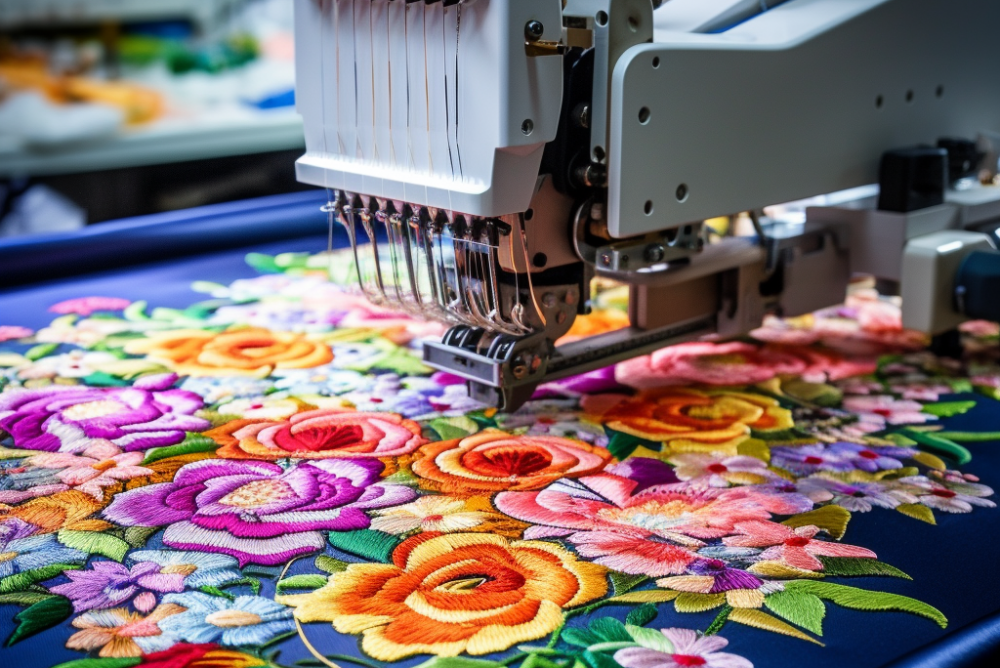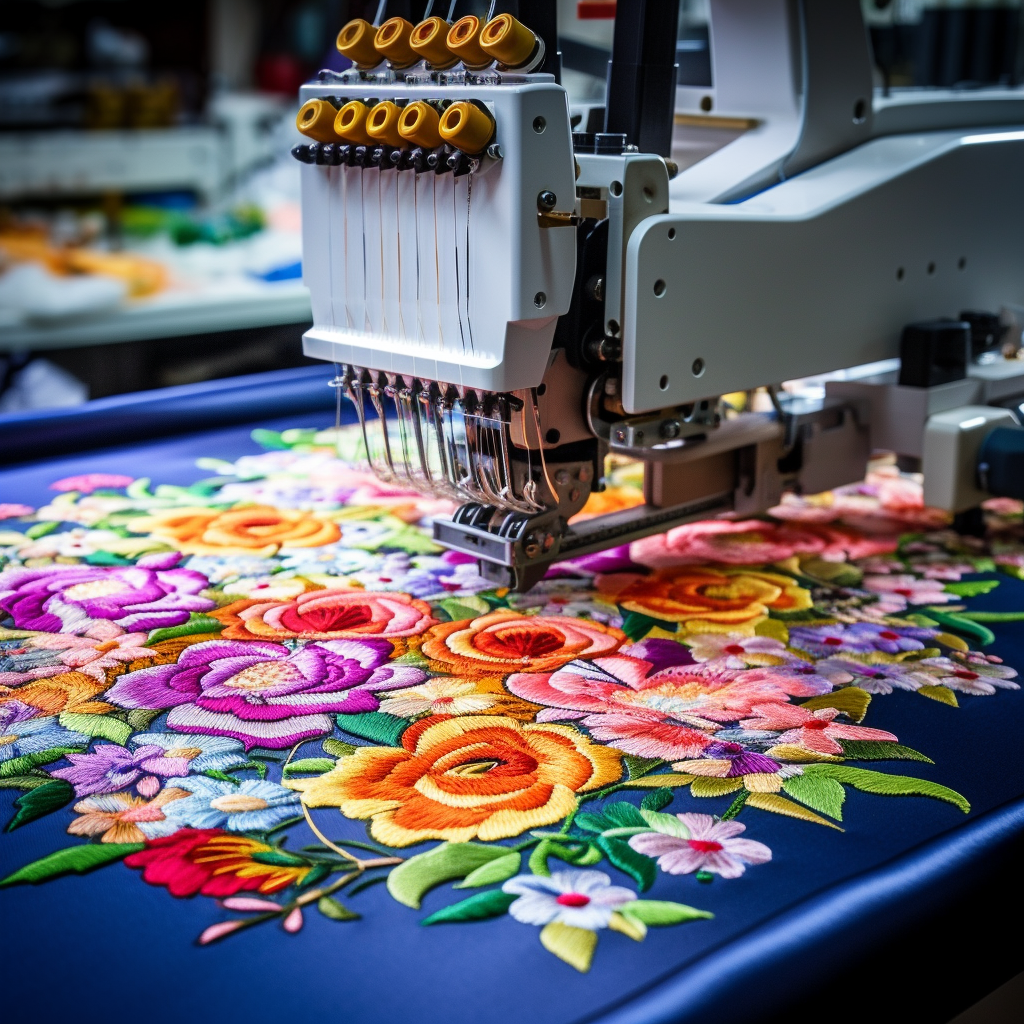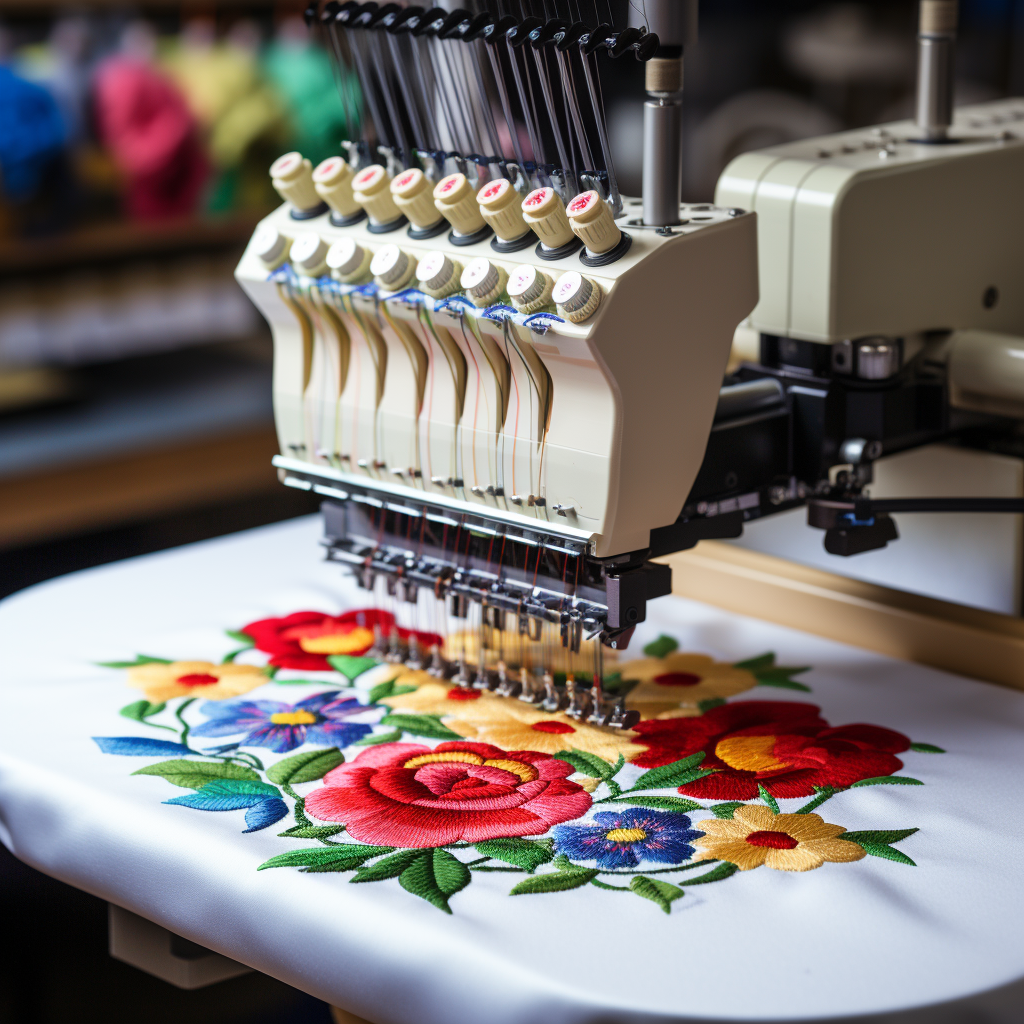Discover the Types of Embroidery Machines: Functions and Advantages


Embroidery is an ancient art form that involves decorating fabric or other materials using a needle and thread. While traditionally done by hand, the invention of embroidery machines has allowed this intricate craft to be accomplished with greater ease, speed and efficiency.
Embroidery machines automate the process of stitching ornamental designs onto fabric. They are equipped with technology that controls the needle and thread while the fabric is securely hooped in an embroidery frame or hoop. This frees the operator from having to manually manipulate the material and allows embroidery to be produced faster and with more consistency.
There are several types of embroidery machines on the market, each with their own unique functions and benefits. The main categories include:
- Single head embroidery machines
- Multi head embroidery machines
- Combination sewing and embroidery machines
- Computerized embroidery machines
Understanding the differences between these embroidery machine types can help guide individuals and businesses to select the right model for their needs and budget.
Single Head Embroidery Machines
Single head embroidery machines are designed with one sewing head and can stitch one design at a time. They are more compact and affordable options well-suited for home embroidery enthusiasts and small businesses.
Description
Single head embroidery machines typically have a flat table top surface on which the fabric hoop is attached. The single sewing head moves back and forth over the hooped fabric area to stitch the programmed design. Most models have built-in design libraries and allow importing of digitized embroidery patterns.
A display screen shows the selected design and allows editing features like resizing, rotating and combining designs. Most machines also include lettering fonts so monograms and words can be added to embroidery projects.
Functions
- Stitches pre-programmed and imported designs
- Includes built-in design libraries and fonts
- Allows design editing and customization
- Suitable for flats pieces of fabric and items that can fit in hoops
- Single sewing head limits embroidery to one item at a time
Advantages
- Compact size takes up minimal space
- More affordable price point for individuals and small business
- Great for learning embroidery and small projects
- Quick and easy set up with user-friendly controls
Disadvantages
- Limited productivity due to single head
- Not suitable for large-scale or continuous embroidery
- Hoop size may be smaller than multi-head machines
- Fewer automated features than advanced models
Multi Head Embroidery Machines
Multi head embroidery machines have multiple sewing heads and can produce multiple embroidered items at once. They are designed for commercial embroidery purposes and high volume production jobs.
Description
Multi head embroidery machines have anywhere from 4 to 60 sewing heads aligned in a row. This allows them to work on multiple pieces of hooped fabric simultaneously and significantly improves productivity.
While more complex, most multi head machines have similar editing capabilities and built-in designs as single head models. The main difference is their ability to assign different designs to each head and automatically switch threads between color changes.
Models with more heads have greater capabilities, but also require more space and training to operate efficiently. They work best in a high-production embroidery shop environment.
Functions
- Multiple sewing heads allow stitching multiple designs at once
- Automated features like thread trimming and color changes
- Commercial machine for high volume embroidery production
- Large hoops accommodate jackets, uniforms and other oversized items
- Networking capabilities for managing multiple machines
Advantages
- Dramatically increased embroidery production capacity
- Time savings from simultaneous stitching
- Automation frees operator for other tasks
- Profit potential from largescale jobs and contracts
- Expand embroidery services by size and volume capabilities
Disadvantages
- Substantially higher cost than single head models
- Large footprint requires dedicated space
- Complex training and maintenance requirements
- Higher operating costs like thread and supplies
- Risk of downtime if one head needs repair
Combination Sewing and Embroidery Machines
Combination machines integrate embroidery functions with standard sewing capabilities for flexibility and convenience. They are popular with sewing and alterations businesses, along with craft enthusiasts.
Description
Combination embroidery and sewing machines essentially join an embroidery module with a traditional sewing machine in one chassis. This allows owners to not only add embroidery flourishes, but also construct, mend and tailor items as needed.
The embroidery capabilities are like a single head machine, while the sewing functions match typical home or commercial-grade sewing machines. Higher-end models may include computer connectivity for accessing designs.
Functions
- Dual purpose for sewing and embroidery tasks
- Switch easily between sewing and embroidery modes
- Sewing features like a range of stitches, speed control and presser feet
- Embroidery features including design libraries and lettering fonts
- Creates embroidered finishes on sewn garments and crafts
Advantages
- Versatility to embroider, construct and mend projects
- No need to invest in separate machines
- Compact footprint with dual capabilities
- Sewing functionality useful for clothing alterations
- Lower cost than buying two separate high-end machines
Disadvantages
- Initial machine purchase is more costly than a standard sewing machine
- Limitations on maximum hoop and material size for embroidery
- Not suitable for large-scale embroidery production
- Potential for more repairs with dual machine components
Computerized Embroidery Machines
Computerized embroidery machines use advanced digital technology for wireless design transfer, touchscreens and added automation. They make embroidery easier and more precise.
Description
Computerized embroidery machines take all the staples of an embroidery-only device but integrate electronics for a digitally connected, user-friendly experience. This includes features like:
- Large LCD touchscreen displays instead of buttons and knobs
- Wireless connectivity to transfer designs from a computer
- USB ports for importing designs from flash drives
- Automatic thread snipping and color changes
- Onscreen editing capabilities and tutorials
Higher-end computerized models may have camera systems for scanning designs or positioning work. They enable very precise design placement and adjustments by just using the screen.
Functions
- Wireless or wired computer connectivity
- Digital display for designs and machine cues
- Advanced editing tools on touchscreen
- Automated features like thread cutting
- Precision stitching with programmable settings
- User-friendly controls and tutorials on display
Advantages
- Convenient wireless transfer of designs to machine
- Touchscreen makes design selection and editing easier
- Digital display tracks all machine settings and stitching progress
- Automated features enhance efficiency with less effort
- Increased precision for design placement and adjustments
- Simplifies learning with tutorials and help menus
Disadvantages
- More expensive initial purchase price
- May still require computer knowledge for transferring files
- Touchscreens prone to damage if not handled carefully
- Requires keeping firmware and software up-to-date
- Technical problems harder to diagnose or repair independently
Conclusion
There are a wide variety of embroidery machine options to suit both home crafters and commercial embroidery businesses. Single head machines offer an affordable entry point and are great for casual hobbyists. Multi head commercial machines enable large-scale production capabilities for profits and expanded services. For sewists, combination machines provide useful sewing abilities alongside embroidery functions. Computerized models utilize digital automation and conveniences for optimal user experience.
Carefully considering your budget, production needs, material sizes and long-term goals can help determine the best embroidery machine investment. Those newer to embroidery may benefit most from starting with an easy-to-use single head machine and learning on smaller projects before advancing to more complex professional models. With the right embroidery equipment, creative entrepreneurs and sewing enthusiasts can turn stitched designs into beautiful works of art.






-500x500.jpg)
-500x500.jpg)
-500x500.jpg)
-500x500.jpg)
-500x500.jpg)